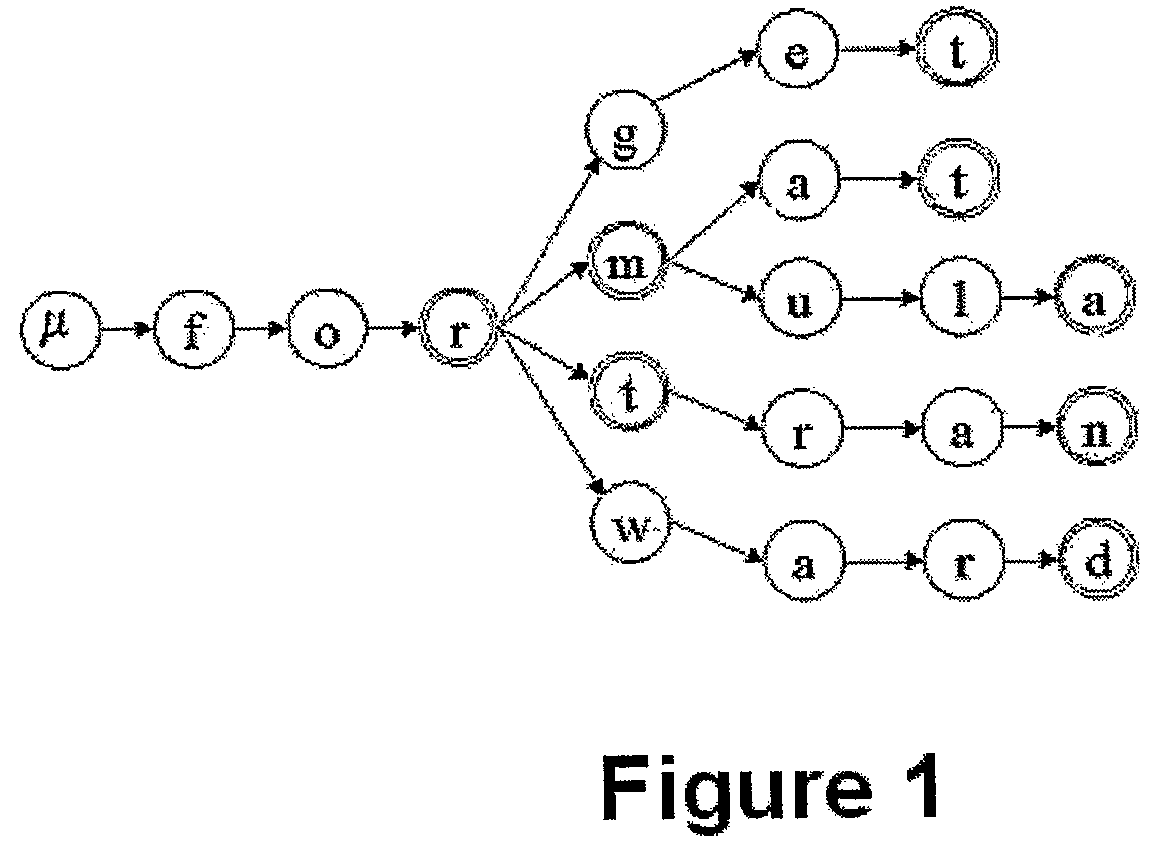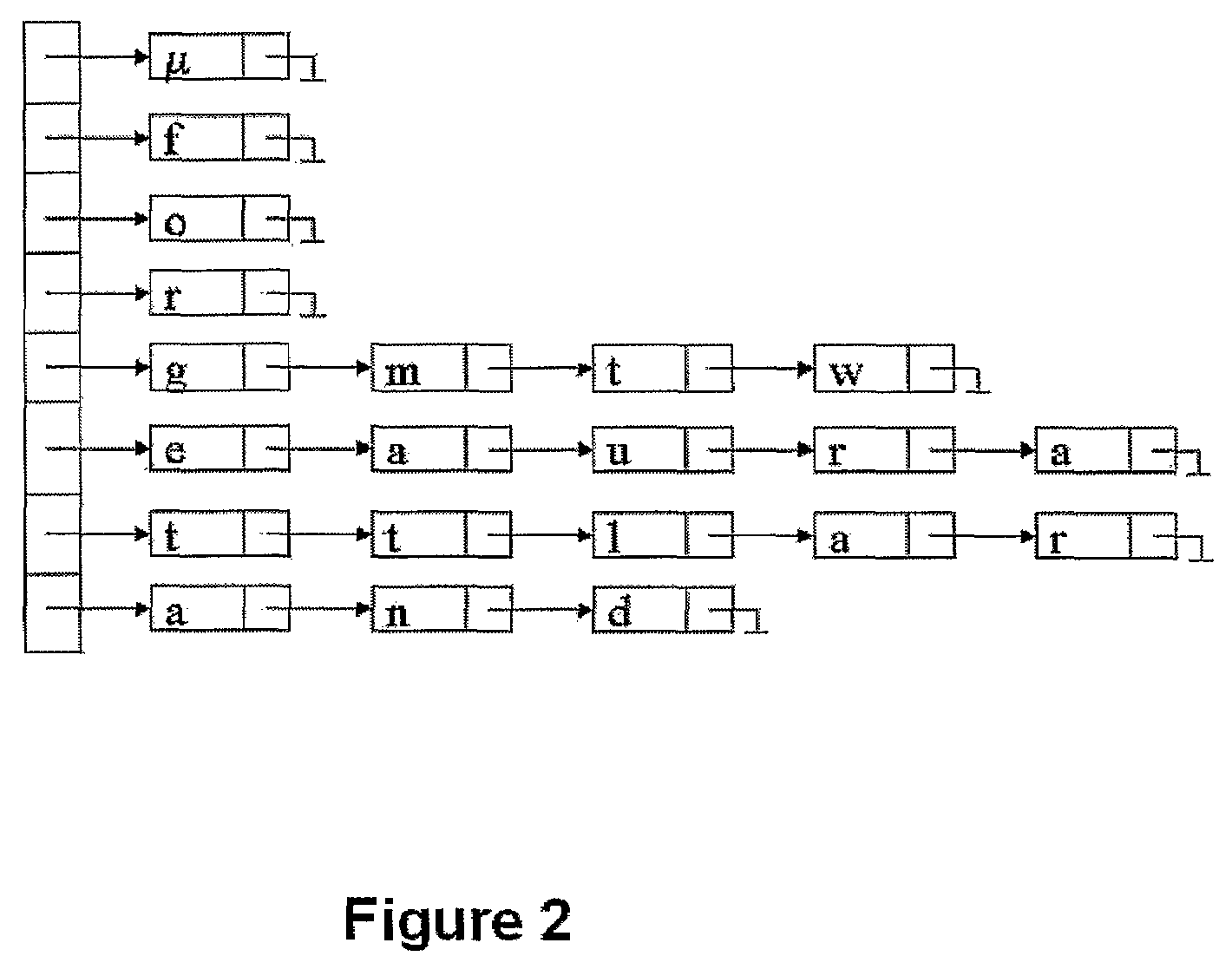Method of syntactic pattern recognition of sequences
a sequence and syntactic technology, applied in the field of syntactic pattern recognition of noisy or inexact strings and sequences, can solve the problems of computational cost, excessive space for algorithms, and difficulty in recognizing syntactic patterns, and achieve the effect of fast, efficient and highly accurate methods
- Summary
- Abstract
- Description
- Claims
- Application Information
AI Technical Summary
Benefits of technology
Problems solved by technology
Method used
Image
Examples
Embodiment Construction
[0047]The present invention presents a process by which the user can recognize an unknown string X* which is an element of a finite, but possibly large Dictionary, H, by processing the information contained in its noisy / inexact version, Y, where Y is assumed to contain substitution, insertion and deletion errors. The recognized string, which is the best estimate X+of X*, is defined as that element of H which minimizes the Generalized Levenshtein Distance D(X, Y) between X and Y, for all X∈H2. Rather than evaluate D(X, Y) for every X∈H sequentially, the present invention achieves this simultaneously for every X∈H, and this is achieved by representing the Dictionary as a trie, and searching the trie using a new AI-based search strategy referred to herein as the Clustered Beam Search. 2Observe that if Y is an element of H, the problem reduces to an exact string matching problem, in which case X* will be recognized as Y. To render the problem non-trivial, we assume that this invention i...
PUM
 Login to View More
Login to View More Abstract
Description
Claims
Application Information
 Login to View More
Login to View More - R&D
- Intellectual Property
- Life Sciences
- Materials
- Tech Scout
- Unparalleled Data Quality
- Higher Quality Content
- 60% Fewer Hallucinations
Browse by: Latest US Patents, China's latest patents, Technical Efficacy Thesaurus, Application Domain, Technology Topic, Popular Technical Reports.
© 2025 PatSnap. All rights reserved.Legal|Privacy policy|Modern Slavery Act Transparency Statement|Sitemap|About US| Contact US: help@patsnap.com



